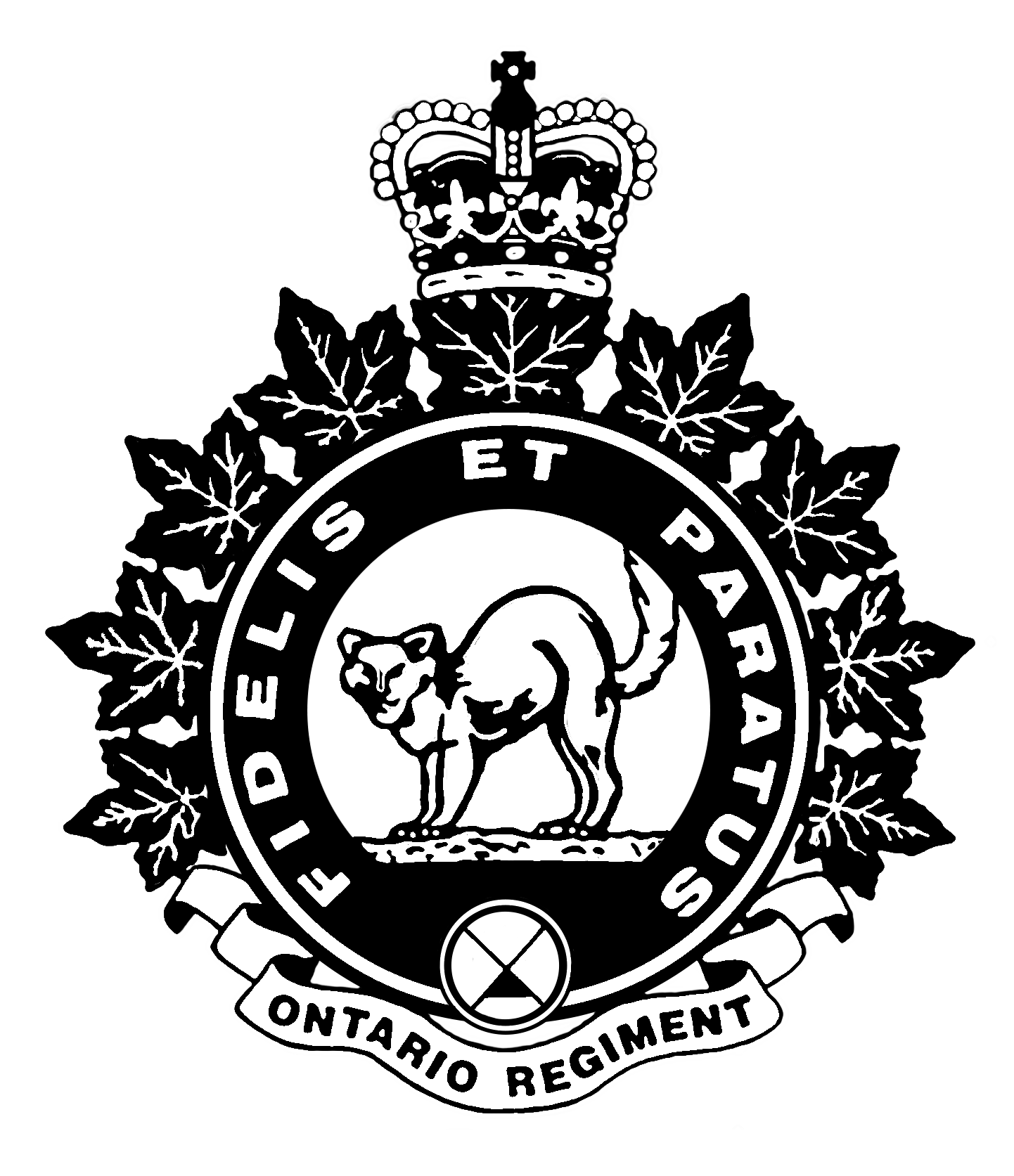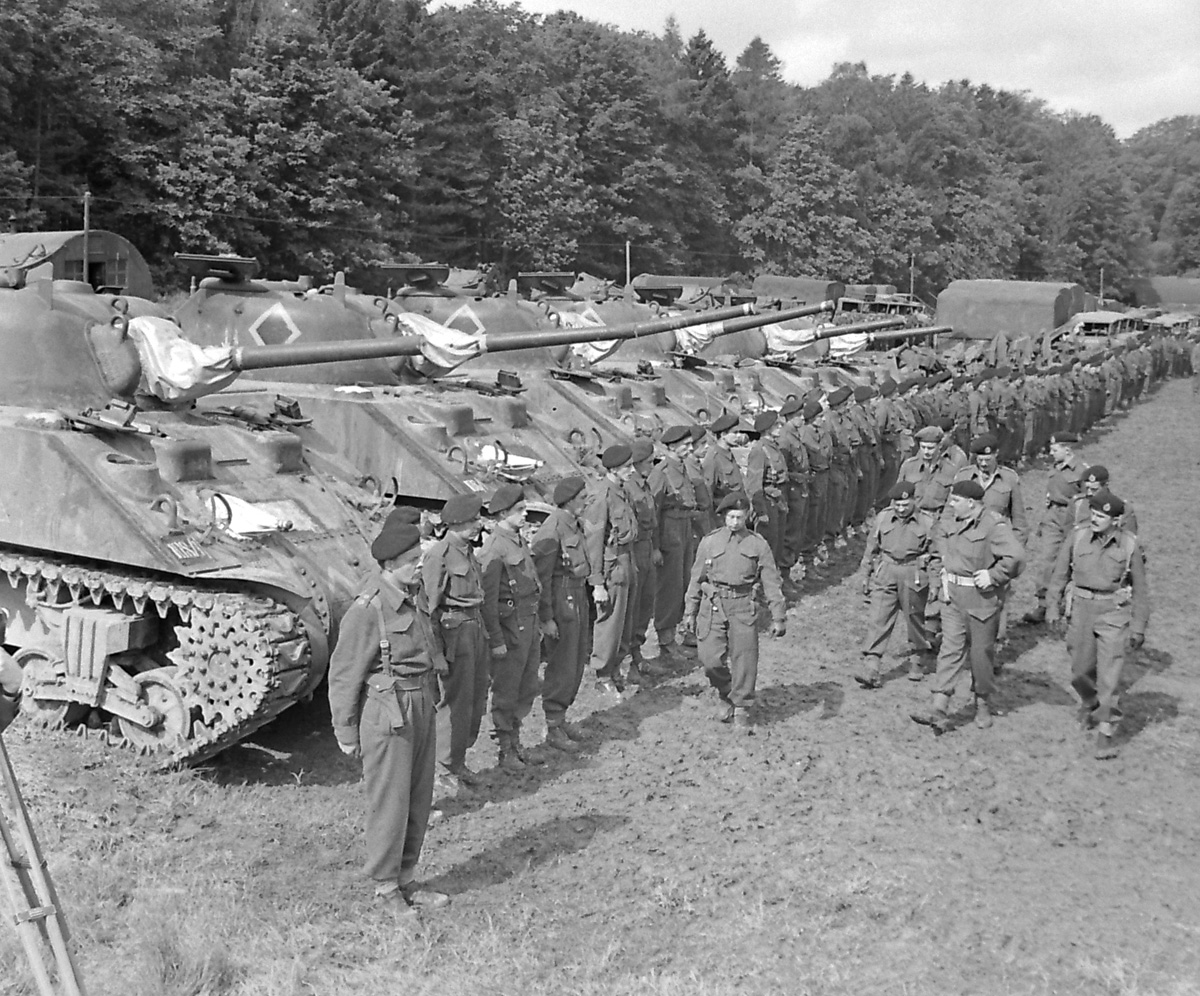While the tank crews of the Ontario Regiment were converting to the Sherman tank and preparing them for upcoming combat (see this article), there was a long list of administrative preparations to undertake. The whole 1st Canadian Army Tank Brigade was involved in frantic activity.
The first mention in the Ontario Regiment war diary of impending combat was on 25 April when it noted that, “Capt. L.E. Astrop returned to WORTHING to work on matters connected with mobilization.” Events were moving quickly; it was only that same day that the Canadian government approved the inclusion of Canadians in the upcoming invasion of Sicily.

On 6 May an officer from “I” Corps came to interview those who will be unsuitable for serving in the field. This included striking off strength any of the soldiers over 40 years old. As a result, there was a steady stream of new soldiers being taken on strength over the next few weeks. Throughout May more vehicles arrived at the Regiment to bring it up to war establishment. This included nine scout cars, jeeps, trucks and three more Sherman tanks. In late May security films were shown to the entire brigade.
The Intelligence Officer, Lieutenant Dunstan McNichol, and the Intelligence Corporal spent the first two weeks of June in London where they were briefed on the upcoming operation. In early June new respirators were issued and tested in the gas hut a few days later. Beginning on 8 June members of the Regiment began leaving for four-day embarkation leaves in two groups. Brigadier R.A. Wyman, commander of the 1st Canadian Army Tank Brigade, began three days of unit inspections on 19 June with the Ontario Regiment.

The first tanks left by train on 12 June for the trip to Wemyss Bay in the Clyde Basin and the departures continued for the next week. The tanks were loaded on the ships by 22 June and the Regiment was afloat. The invasion flotilla was organized into Force “X” and Force “Y.” The 1st Canadian Infantry Division, with the Three Rivers Regiment (one of three tank regiments in 1st Canadian Army Tank Brigade) attached, comprised the Canadian contribution to Force “X.” This group was assigned the task of leading the assault on the first day. Force “Y” was to act as a reserve group and would land on the fourth day. The Ontario Regiment and the Calgary Regiment were among the units making up Force “Y.”
The flotilla anchored off Greenock, where the Ontarios had arrived in the UK almost exactly two years prior. Headquarters Squadron personnel were loaded on a troopship while the other squadrons were loaded on Landing Ships, Tank (LST). A large collection of vessels was being assembled in Clyde Basin. They were organized into multiple convoys, with the Ontarios part of Slow Convoy KMS 19. This convoy consisted of 42 ships carrying troops, vehicles, equipment and fuel. Six Royal Navy corvettes were assigned as escorts.
The Ontarios’ tanks were loaded on LST 198, LST 200 and LST 418, at one squadron per LST. Headquarters Squadron’s vehicles were spread among the three ships. The LST had large doors at the bow and a ramp that extended. This configuration, combined with a shallow draft, allowed the ship to unload tanks and equipment directly onto the beach.
It was a supreme feat of planning and executing to get to this point. In late April the Regiment was focused on training on their new Ram tanks. In less than nine weeks the soldiers had transitioned to the Sherman tank, waterproofed and painted them, packed stores and the Regiment’s vehicles were loaded on LSTs. The convoy put to sea on 25 June, with the destination still a secret.
The Ontarios soon settled into the shipboard routine. The vehicles’ engines were started and run each day while the ships’ ventilating fans were on. The .50 calibre machine guns normally mounted on the tanks were now mounted on the ships’ rails to supplement the permanent anti-aircraft guns of the ships. Bren guns were also placed on the deck. There were lectures on hygiene and combined operations, and PT, with route marches, was also part of the daily routine. As the convoy sailed south the weather became warmer and the Ontarios found time to relax in the sun.
Each ship in the convoy had two bags which contained details of the upcoming invasion. Type “A” bags with a green band were opened once ship-to-shore communication had ended on the evening of 25 June. These bags contained intelligence information on Italy, but no details of the impending campaign.
Operation Husky, the invasion of Sicily, began on 10 July. Husky consisted of a combined force of British, American and Canadian troops. The Three Rivers Regiment was part of the initial landing force.
Orders were received on 11 July to open the Type “B” bags. The content of these bags was specific to Sicily, including maps. The 1st Canadian Army Tank Brigade (less the Three Rivers Regiment) was being held as a British Eighth Army reserve. The Ontarios’ initial orders were to sail to Malta. Just as the convoy arrived off Malta, new orders were received to proceed to Siracusa, Sicily. Siracusa was sighted on the morning of 13 July. The stage was now set for the Ontario Regiment to see combat.
Rod Henderson
Rod Henderson is the Regimental Historian of the Ontario Regiment. He served as a Sergeant in the Regiment and is the author of “Fidelis Et Paratus: The History of The Ontario Regiment RCAC”.


